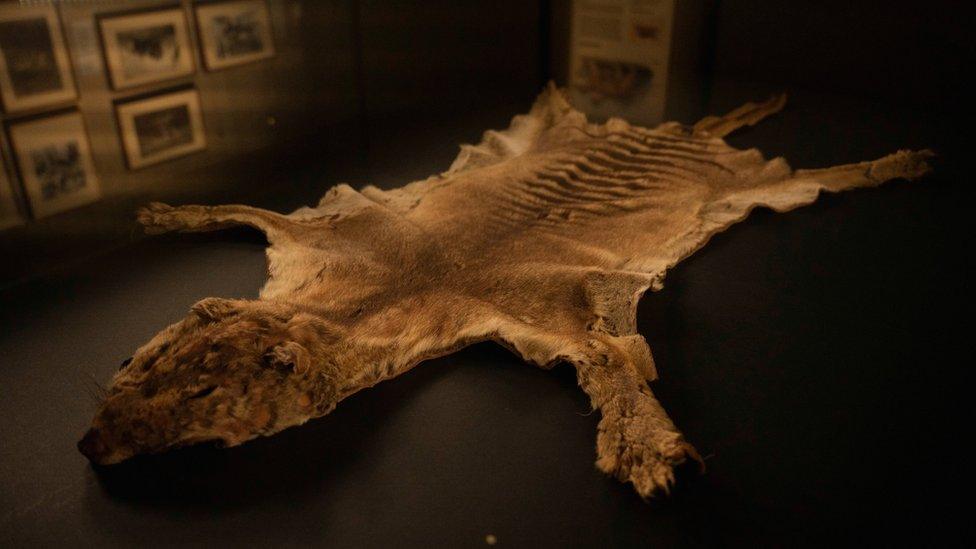Tasmanian tiger: Remains of last thylacine found in cupboard after 85 years
- Published

The specimen was kept in a Hobart museum all along, an author says
The remains of the last known Tasmanian tiger - thought lost for 85 years - have been found stashed in the cupboard of an Australian museum.
The thylacine died in captivity at Hobart Zoo in 1936 and its body was given to a local museum.
But what happened to its skeleton and skin afterwards had been an enduring mystery.
The Tasmanian Museum and Art Gallery lost track of the remains, and they were believed to have been thrown out.
New research has discovered they were at the museum all along - preserved but not properly catalogued.
"For years, many museum curators and researchers searched for its remains without success, as no thylacine material dating from 1936 had been recorded," said Robert Paddle, who published a book in 2000 on the extinction of the species.
"It was assumed its body had been discarded."
But he and one of the museum's curators found an unpublished taxidermist's report, prompting a review of the museum's collections.
They found the missing female specimen in a cupboard in the museum's education department.
It had been taken around Australia as a travelling exhibit but staff were unaware it was the last thylacine, curator Kathryn Medlock told the Australian Broadcasting Corporation.
"It was chosen because it was the best skin in the collection," she said.
"At that time they thought there were still animals out in the bush."
The skin and skeleton are now on display at the museum in Hobart.
Originally believed to have roamed across Australia, Tasmanian tiger populations declined because of impacts from humans and dingoes.
Eventually the marsupial was only found on the island of Tasmania, where it was ultimately hunted to extinction.
- Published17 August 2022
- Published15 September 2021
- Published8 September 2016